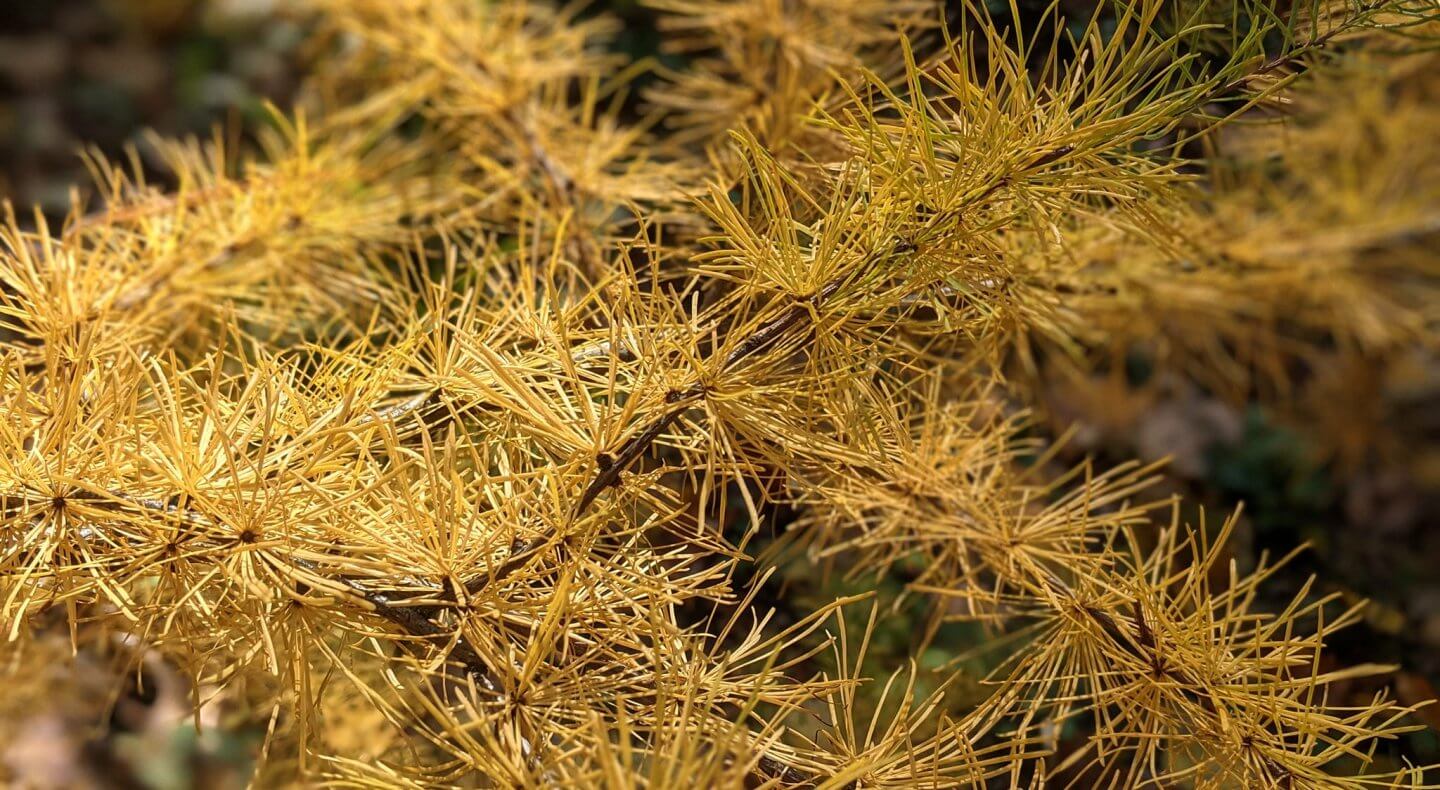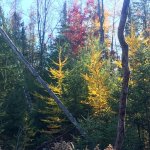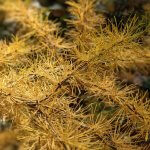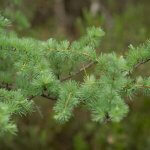Tamarack Trees in Fall
October 31, 2022Maple trees usually steal the fall color show, but if you happen to see a wetland with tamaracks (Larix laricina) this time of year, you’re in for a real treat. The soft needles of these trees turn a beautiful golden color that brightens the woods before falling and carpeting the forest floor. This beautiful native tree is found throughout the state, and while it is able to grow in a variety of habitats (as long as the soil stays sufficiently moist), it is most commonly associated with wetlands.
Tamarack is the only “deciduous conifer” native to Michigan. While all conifers (cone-bearing and needle-shaped leafed trees) lose their leaves, most shed and replace them over the course of the year so it appears like they never lose their leaves. Tamaracks are unique in that they shed their leaves all at the same time, much like a deciduous tree.
As the leaves fall to the ground, the acidic needles decompose and create an acidic soil environment that prohibits competition from surrounding plants, creating conditions conducive to tamarack seedling growth. Tamaracks are one of the few trees that do well on acidic bogs.
Now that you know what to look for, put on some brightly colored clothes and head out for a golden-hued wetland hike!
- Photo by Nate Richardson
- Photo by Eddie Sullivan
- Photo by Kim Stringer
Categorised in: Field Notes



